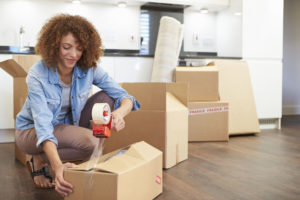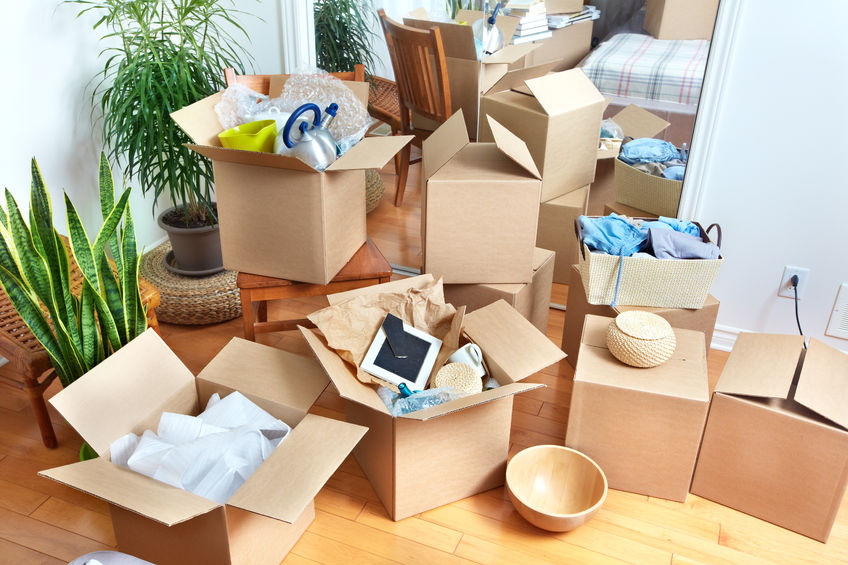 Once you have found a great local self-storage company where you can pack away your un-used possessions, the next step is to get all your stuff safely packaged up and ready for the move. After all, the intention is presumably to preserve these items, so having them get damaged or broken in the process shouldn’t be part of the plan.
Once you have found a great local self-storage company where you can pack away your un-used possessions, the next step is to get all your stuff safely packaged up and ready for the move. After all, the intention is presumably to preserve these items, so having them get damaged or broken in the process shouldn’t be part of the plan.
However, packing items away safely and securely can be a little more onerous than you may give it credit for. You’ll need some packing tips on how to make the most of using self-storage unit.
Self-Storage Packing Tips – #1) Good Boxes and Packing Materials are Important
- To keep items from getting dusty or broken, you’re going to want to make sure everything is covered. This means you will need to find some sturdy cardboard boxes.
You may have plenty lying around from the last time you moved to a new house, but if not, you can purchase good ones from the local Home Depot or directly from the self-storage company. If you prefer the free route however, your local grocery store or supermarket may be able to help you out with some good sturdy boxes. - You can also use large plastic containers if you prefer. Although more expensive than cardboard boxes, these provide extra protection against water damage and will stand up to the abuse of many moves.
While you’re out finding boxes, it’s a good idea to stock up on strong tape, packing chips, newspaper, and a Sharpie (alternative permanent markers are available).
#2) Pack ‘em Right
- When filling your boxes, try and make sure to use as much of the space as possible and fill any gaps with newspaper and/or packing chips. The more space there is in the box, the more freedom the items will have to move around during transit and get damaged. Make sure to pack books flat to avoid damaging the spines.
- That said, make sure boxes aren’t so full they become difficult to lift. The US Occupational Safety & Health Administration recommends that a person risks injury if they lift items heavier than 50lbs unaided, so bear this in mind. Also, try and ensure weight is distributed evenly within the box, to avoid awkward lifting.
- Once the box is full, securely tape along all the edges for extra strength, and seal the flaps down.
Here are some more useful Self-Storage Packing Tips:
#3) Use Labels and a Permanent Marker to write the contents on the side of each box.
- This will come in handy if you need to retrieve something from your self-storage unit in the future, as it will prevent you from having to open and dig through multiple boxes.
#4) Use Old Blankets, Sheets and Towels for Padding and Protection
- Want to save money on bubble wrap and foam padding? You may have perfectly useful old blankets, sheets and towels sitting in boxes never to used again. Well let’s put them to good use!
- Blankets work great to wrap pictures and artwork and towels can be used to protect cookware/dishes, fragile decorative pieces and more.
#5) Keep Everything Clean
- For unboxed items such as furniture, you can use these old sheets or blankets to keep the dust off them. If you don’t want to sacrifice your best linen to the self-storage gods, then you should be able to find some for a few dollars at a thrift store or charity shop. Or you can invest in some good plastic painters tarps at the local hardware store.
- If you choose a drive-up storage unit, we recommend covering everything with plastic tarps – these units tend to be pretty dusty.
#6) Get the Right Truck
- It’s also important to get the right sized moving van (or to make sure your moving company knows just how much stuff you have). Eliminating multiple trips to your new home and storage facility will save you time and money. Most moving companies will assess the job in person and decide what they will need for the move. If you are doing it yourself, call or visit your local U-haul beforehand to learn what will work best for your move.
- Just remember, it’s usually cheaper the rent a larger truck and make one trip than it is to pay for extra gas and mileage charges that a smaller truck may require.
#7) Organize Everything Once You Get There
- Before you get to your storage unit, try to figure out what items you might need easy access to. Place furniture and other rarely used items and boxes in the back of your unit, leaving the space by the door for things you might want to need sooner rather than later.
#8) Don’t Pack Heavy Items on Top
- Place heavy area rugs, TVs or file boxes on the floor. These items may seem just fine when you place them on top of other items, but their weight will slowly crush what’s beneath them if not properly stacked.
#9) Take the Legs Off
- Removing table legs and storing the table top flat against the wall will save a lot of space in your storage unit.
#10) Create a Storage Unit Map
- It’s also very helpful to make a list or map of your storage unit as you move items in. Boxes and loose items can easily get buried behind other stuff. And let’s face it, you are probably going to forget everything you did in the mad scramble that moving day becomes.
- Group similar items together like clothes, kitchen supplies, and bedding. You might also want to group items together for each family member.
- Make a list of all items as you place them in the unit, or better yet, make a map.
#11) Don’t Forget to Use Your Camera!
Here are some great ways to use your smartphone camera when moving:
- Take pictures of complicated wiring setups – like the back of your stereo or TV.
- Take pictures of decorative arrangements before you break them down so you can recreate furniture, artwork and picture layouts that you like.
- Take pictures as you place items into a storage unit. This way you will have a record to refer back to later when you come to retrieve a needed item.
#12) Keep Extra Boxes, Packing Tape and a Marking Pen in Your Unit
- It’s going to happen – you get to your storage unit and can’t find what you are looking for. You begin to open boxes in a futile effort to locate your favorite sweatshirt and things quickly become a mess.
- Make sure to have a few extra boxes and storage tape in case you need to repack your items on the fly. And make sure to mark down the items inside each box using a permanent marker.
Self-Storage Packing Tips – Some Final Thoughts
Now you should be armed with everything you need to get packing and enjoying your home anew with the improved quality of life which comes with a good de-cluttering. Just remember that the simple fact is that you need a storage unit insurance program to help you repair or replace any of your property which gets damaged or destroyed while in storage.
What’s My Best Choice for Storage Unit Insurance?
Simply put? In terms of its pricing, coverage, convenience, and reliability, the SnapNsure™ Contents Program is your best choice.
Insurance for your self-storage unit may be purchased directly through the SnapNsure™ website, allowing savings of 50% to 70% per month compared to other plans. This arrangement also allows you the luxury of selecting your storage facility, then paying for coverage on-site via mobile phone. Policies may be paid for on an annual or monthly basis, with coverage starting as soon as you’ve paid your first month’s premium, and your signed application is received online by the company.
And every SnapNsure™ policy has a standard $100 deductible.
And the comprehensive coverage you’ll get with SnapNsure™ also allows you to add specific incidents coverage for Named Storms, Flood, Rodent, and Earthquake – a combination of options which is uniquely offered in the U.S. by one company alone: SnapNsure™. Remember too that SnapNsure™ is the only insurance provider which offers Named Storm coverage for self-storage, at all.
SnapNsure™ is an independent (third-party) provider – so you won’t be tied into a limited coverage insurance plan from your storage facility. As an assurance of reliability, SnapNsure™ is underwritten by The Hanover Insurance Group – the holding company for one of the largest admitted insurance carriers in the United States.
Clearly, it makes good sense to get the Self Storage Unit Insurance coverage you need from SnapNsure™. Get Insured now!



